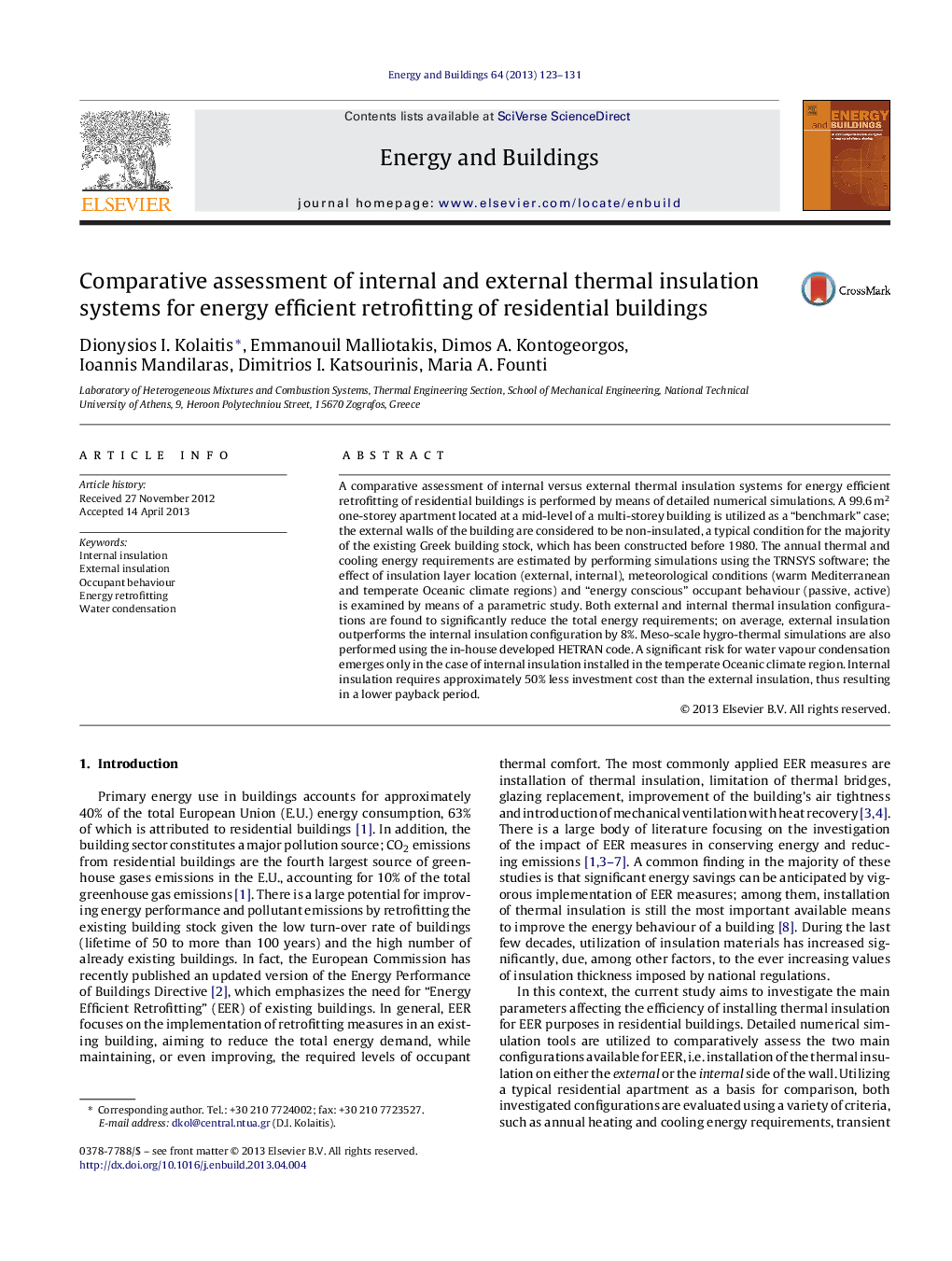| Article ID | Journal | Published Year | Pages | File Type |
|---|---|---|---|---|
| 263388 | Energy and Buildings | 2013 | 9 Pages |
•Assessment of internal versus external insulation for energy efficient retrofitting.•Thermal and hygro-thermal simulations are performed using TRNSYS and in-house code.•Effects of meteorological conditions and “energy conscious” occupant behaviour.•External insulation exhibits higher energy savings and higher installation costs.•Internal insulation exhibits higher risk for water vapour condensation.
A comparative assessment of internal versus external thermal insulation systems for energy efficient retrofitting of residential buildings is performed by means of detailed numerical simulations. A 99.6 m2 one-storey apartment located at a mid-level of a multi-storey building is utilized as a “benchmark” case; the external walls of the building are considered to be non-insulated, a typical condition for the majority of the existing Greek building stock, which has been constructed before 1980. The annual thermal and cooling energy requirements are estimated by performing simulations using the TRNSYS software; the effect of insulation layer location (external, internal), meteorological conditions (warm Mediterranean and temperate Oceanic climate regions) and “energy conscious” occupant behaviour (passive, active) is examined by means of a parametric study. Both external and internal thermal insulation configurations are found to significantly reduce the total energy requirements; on average, external insulation outperforms the internal insulation configuration by 8%. Meso-scale hygro-thermal simulations are also performed using the in-house developed HETRAN code. A significant risk for water vapour condensation emerges only in the case of internal insulation installed in the temperate Oceanic climate region. Internal insulation requires approximately 50% less investment cost than the external insulation, thus resulting in a lower payback period.
